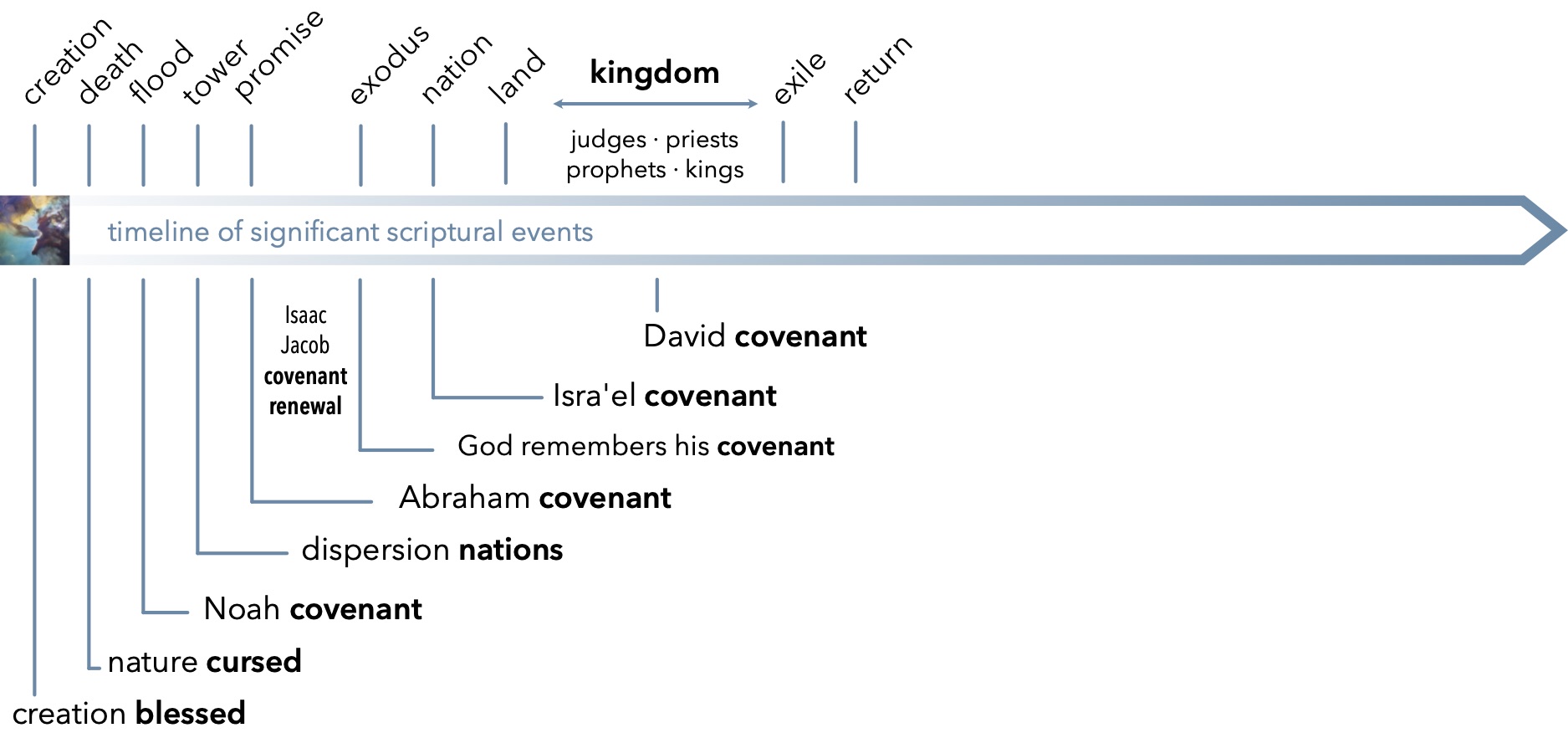Covenant and Scriptureনমুনা

Scripture in Perspective
The books and stories of the Bible are bound together by a series of covenants. Covenant relationships, established with human beings, are crucial to God’s redemption of his creation.
Appreciating the significance of covenant is essential to a faithful, holistic understanding of Scripture. This may be illustrated by contrasting historical and covenantal perspectives of Scripture.
Scripture in Historical Perspective
Historical perspectives of Scripture review principal events and stories of the Old Testament in chronological order, typically including:
- Creation
- Knowledge of good and evil, death and murder.
- A catastrophic flood and the confusion of languages.
- The promises of land and descendants, to a man named Abraham.
- An exodus from Egypt and formation of a new nation, Israel.
- Israel’s journey into the land promised to Abraham.
- Israel’s experiences as a kingdom, ruled by judges, priests, prophets, and kings.
- Israel and Judah’s eventual exile from and promised return to the land.
The figure below represents these scriptural events as a timeline. These events are typically related to Christian faith in terms of the significance of God’s calling, provision, and protection; human rebellion, judgement, and disaster; return, forgiveness, and deliverance; faithfulness and unfaithfulness.

Scripture in Covenantal Perspective
Another theme is evident within these historical narratives. A profound theme that flows throughout Scripture: a series of divine covenants. Discerning this pattern requires a re-examination of the biblical stories:
- The blessing of creation.
- A curse placed upon the ground.
- A covenant established with Noah.
- A covenant established with Abraham.
- The covenant renewed with Isaac and Jacob.
- A covenant established with Israel, after the exodus from Egypt.
- A covenant made with David.
The figure below incorporates these covenantal events on the timeline, to create a covenantal perspective of Scripture. In the diagram, historical events are shown like trees, going upwards. In contrast, the covenants are displayed almost like roots, going downwards. This metaphorical interpretation emphasises the importance of the covenants: though less visible, they are the real source of biblical history.

You can explore these topics further by looking up and reading these scriptures:
- Genesis 1:27–31; 3:17–19; 9:9–16
- Genesis 12:1–3, 15:18; 17:1–22
- Genesis 22:15; 26:1–5,24, 28:13–15
- Exodus 19:4–6
- 2 Samuel 7:12–16, 23:5
- Psalm 89:3

Reflection
- Why did God choose to make covenants with human beings?
- What do the patriarchal covenants reveal about God’s character?
- How does recognising the biblical covenants alter your perspective of the meaning of scripture and of God’s purposes?
ধর্মগ্রন্থ
About this Plan

The biblical covenants are key to faithfully interpreting God’s historical and eternal purpose. Appreciating the significance of God’s covenants is essential to a holistic interpretation of Scripture.
More
Related Plans

Biblical Leadership Series: Lead Like Nehemiah

Multiplying the Gospel // Gospel X - Multiplying the Message

Ears to Hear (S3-E7)

The Way to Follow Jesus According to the Gospel of Luke

Leading Well: 5 Choices for Christian Leaders a 5 - Day Plan by Michele C. Walker, Ph.D.

Now Over Next

The Unseen God — Part Two

Decide to Thrive: Youth Edition

In Her Image: Character Study of the Proverbs 31 Woman
